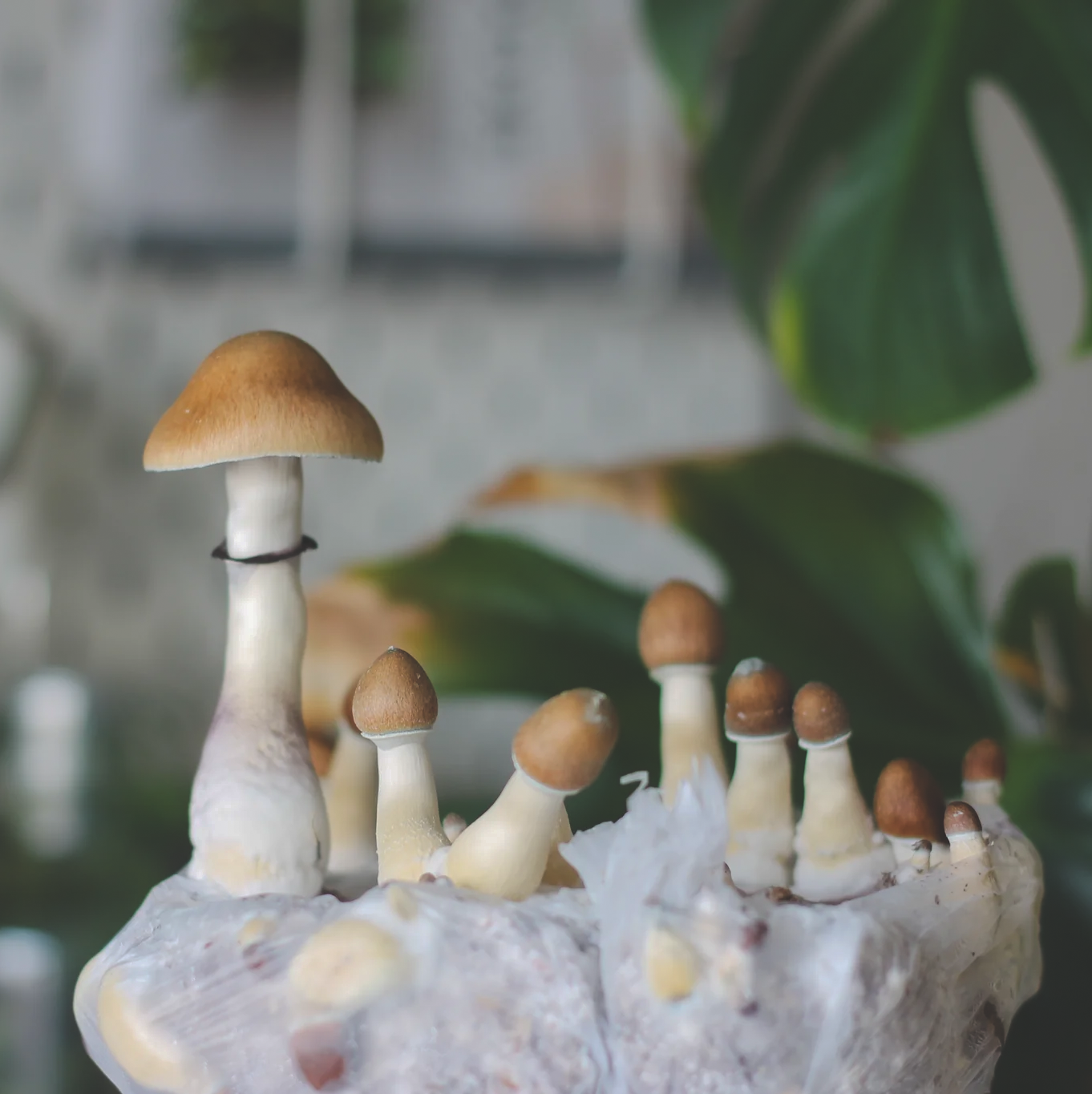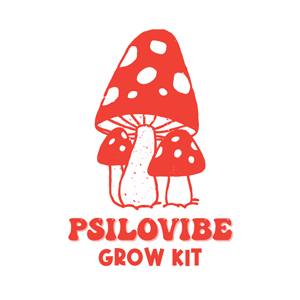What is Psilocybin?
Psilocybin is the psychedelic compound that catapults users into profound experiences, found naturally in certain mushrooms, affectionately known as “magic mushrooms.” Its interaction with the brain’s serotonin receptors, particularly after being metabolized into psilocin, facilitates a spectrum of effects from vivid hallucinations to deep emotional introspections. This compound ignites a journey within, altering perceptions, emotions, and the sense of time, often leading to experiences described as spiritual or deeply insightful.

Chemical Relation:
Closely related to serotonin, influencing mood and perception.
Psychoactive Transformation:
Metabolizes into psilocin, which actively binds with serotonin receptors.
Effect Timeline:
Effects manifest within 20-40 minutes and can extend for several hours.
Psilocybin or Psilocin?
Psilocybin and psilocin are closely related compounds found in psilocybin mushrooms, also known as magic mushrooms. While both play crucial roles in the psychedelic effects attributed to these mushrooms, they differ in their chemical structure, how they are metabolized by the body, and their direct impact on the brain. Understanding the differences between psilocybin and psilocin is essential for comprehending how magic mushrooms exert their psychoactive effects.
Psilocybin
Psilocybin (4-phosphoryloxy-N,N-dimethyltryptamine) is a naturally occurring psychedelic prodrug compound. It serves as the precursor to psilocin, meaning that it is converted into psilocin in the body. Psilocybin is non-psychoactive until it is metabolized by the liver. This process, known as dephosphorylation, removes the phosphate group from psilocybin, converting it into psilocin, the compound that is directly responsible for the psychedelic effects experienced by users.
Psilocin
Psilocin (4-hydroxy-N,N-dimethyltryptamine) is the active form of the psychedelic compound that directly interacts with the serotonin receptors in the brain, particularly the 5-HT2A receptor. This interaction is what leads to the altered states of consciousness, changes in perception, mood, and thought that are characteristic of the consumption of psilocybin mushrooms. Psilocin is responsible for the psychoactive effects such as visual and auditory hallucinations, emotional shifts, and alterations in the perception of time and reality.

Differences in Effects
Metabolism:
Psilocybin is a prodrug, meaning it becomes active only after it is metabolized into psilocin. This metabolic process can affect the onset and duration of the psychedelic experience. Psilocin, being the active form, exerts its effects immediately upon its formation and release into the bloodstream.
Psychoactive Properties:
Psilocybin itself does not bind significantly to serotonin receptors and does not produce psychoactive effects until it is converted to psilocin. Psilocin, with its ability to directly agonize serotonin receptors, is the primary molecule responsible for the psychedelic experience.
Stability and Detection:
Psilocybin is more stable than psilocin in the environment, which is why it is predominantly found in fresh and dried mushroom material. Psilocin is more susceptible to degradation and is less stable, making psilocybin the primary compound detected in most analytical tests for psilocybin mushrooms.
Therapeutic Potential
The interest in psilocybin and psilocin extends beyond their psychedelic effects, with increasing research into their potential therapeutic applications. Studies have shown that these compounds can have significant benefits in treating conditions such as depression, anxiety, and PTSD, often producing lasting positive effects after just one or a few doses. The focus on psilocybin, in particular, is due to its potential for creating profound and beneficial changes in the brain’s patterns of activity, offering new pathways for therapeutic intervention.
Legal and Research Considerations
In many jurisdictions, both psilocybin and psilocin are classified as controlled substances, which has historically limited research into their effects and therapeutic potential. However, recent shifts in policy and a growing body of evidence supporting their safety and efficacy in certain therapeutic contexts are leading to a reevaluation of their legal status and an increase in scientific research.
Understanding the distinction between psilocybin and psilocin is crucial for both researchers and those interested in the therapeutic and psychedelic effects of magic mushrooms. As research continues, the nuanced roles of these compounds in the human brain and their potential benefits are likely to become increasingly important in both scientific and medical communities.


